Right
now baby birds are all over
backyards and bird feeders with their parents. This week I've observed
fledgling Downy Woodpeckers, Hairy Woodpeckers, Black-capped Chickadees,
House Finches, American Robins and Mourning Doves- all with their
parents. It seemed like the perfect time for a post on fledglings and
specifically 5 things you need to know about them.
1. They are the sames size as their parents and sometimes appear larger! It's
true. Many times we think of baby animals as small and cute. We are also used to many animals taking a long time to grow and develop. Birds however, are a little
different. Many of our backyard bird babies stay in the nest for about
two weeks after hatching. Because of their rapid growth, by the time
they fledge (leave the nest) many are almost the same size as their
parents. In this regard, they are easily confused with adult birds.
Since size is not a great way to identify baby birds, we need other
clues. Here are a few ways to tell fledglings apart from adult birds:
- Differences in plumage
- Colour of plumage
- Colour of secondary
sexual characteristics (beak)
- Large markings on the sides of their beak (which forms the appearance of a large mouth)
- Begging behaviours with wing fluttering
- New behaviours they are learning (see
number 4)
- Different calls/songs from adult birds
- Landing on feeders but not feeding;
instead waiting for mom or dad to feed them
Funny enough sometimes baby
birds can appear larger than their parents because of their fluffy
pristine feathers. After several weeks of sitting on eggs and carrying
for young, the plumage on adult birds can appear worn and thinned
(especially in females who loose belly feathers in exchange for a brood
patch- a patch of bare skin for incubating eggs). For more information on
baby bird identification see our post from 2015 on How to Identify a Baby Bird
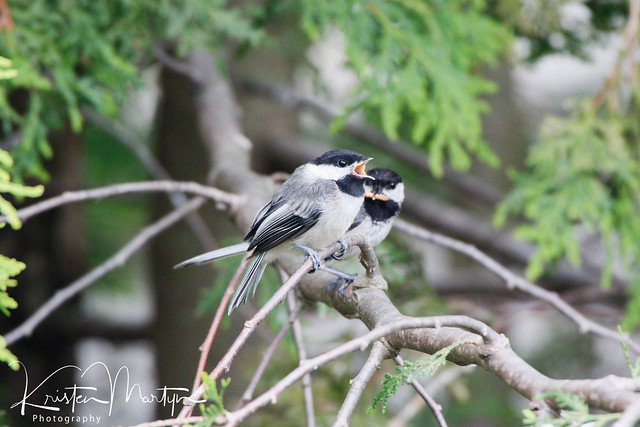 |
| Fledgling Black-capped Chickadee (front) with large markings on the sides of the beak. |
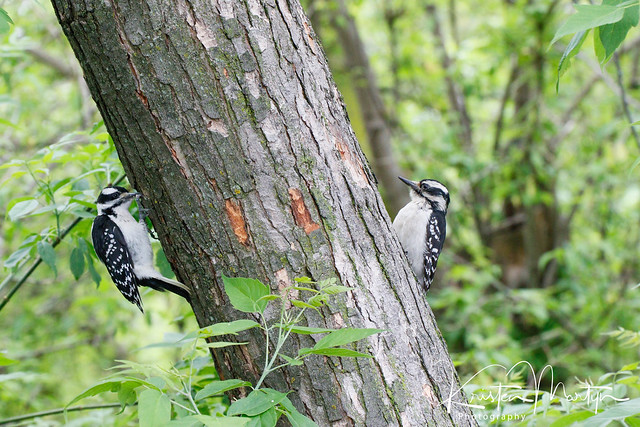 |
| Fledgling Hairy Woodpecker (left) & adult female (right) appear to be the same size |
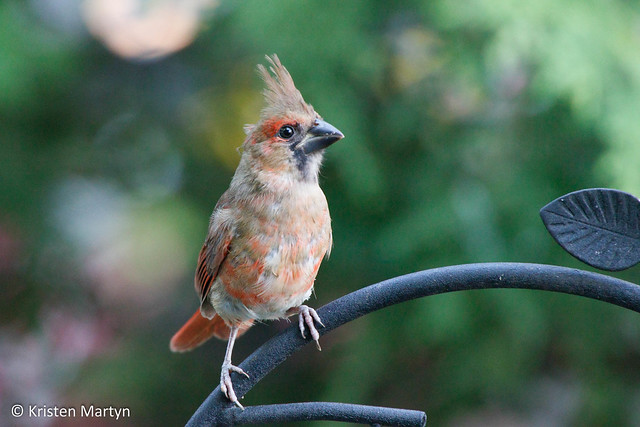 |
| Young male Northern Cardinal plumage changing colour- notice the beak is still black and not red as in the adults |
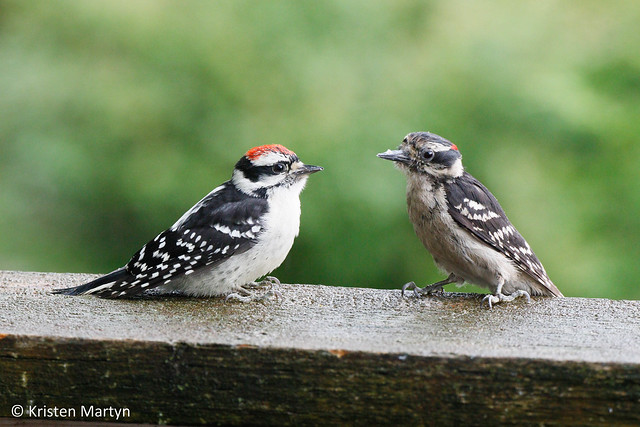 |
| Fledgling Downy Woodpecker male (left) and adult male (right)- baby appears larger and has more pristine feathers. |
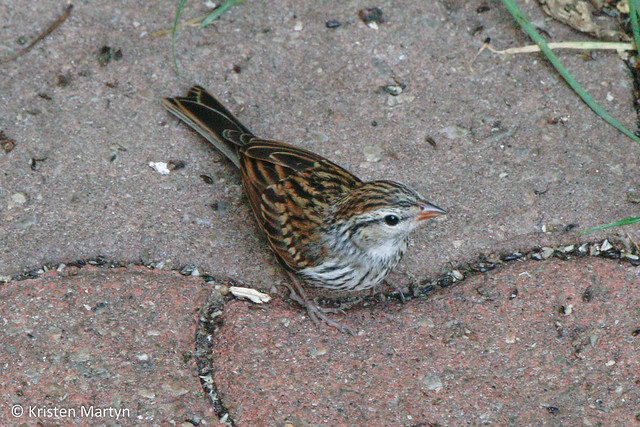 |
| Fledgling Chipping Sparrows have completely different plumage than the adults |
2. Their diet is made up mostly of insects. Bird
parents feed their young ones a diet made up mostly of
insects. Insects provide a much
needed protein and fat to fledglings and help them grow up quickly! Lack
of proper nutrition can result in poor growth periods. American
Goldfinches are an exception to this, they are
herbivores and primarily feed their young seeds. Research by Doug Tallamy (entomologist at the University of Delaware) found that one pair of chickadees delivered food once every 3 minutes to their nest! Estimating that they forage during the hours of 6 am- 8 pm (entirely realistic during nesting season!) means they make approximately 390-570 trips with insects to the nest. Hatchlings are in the nest for approximately 14-18 days. If you do the math this means that chickadee parents are collecting between 6240-10,260 while they are in the nest!!! This number does not include the insects required once the young ones fledge, but are still cared for by their parents for another 1-2 weeks. Chickadees typically raise one brood, so think about the insects needed by cardinals, robins and other birds that raise multiple broods and the numbers are even more staggering! If you feed suet or live mealworms, you may be going through a lot of food during nesting season! Just this past 2 days only I've fed about 2500 live mealworms in five different feeders. Between the cardinals, orioles, chickadees, woodpeckers, nuthatches, robins and House Wrens (my latest addition) mealworms are literally "flying" out of the feeders. I'm happy to supplement their diet at this time of the year, as recent studies have shown regular access to high quality food results in more nestlings successful raised and in better health.
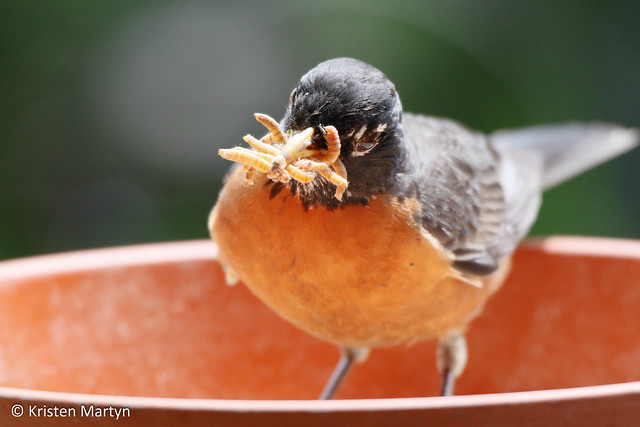 |
| Adult male American Robin collecting live mealworms for his brood |
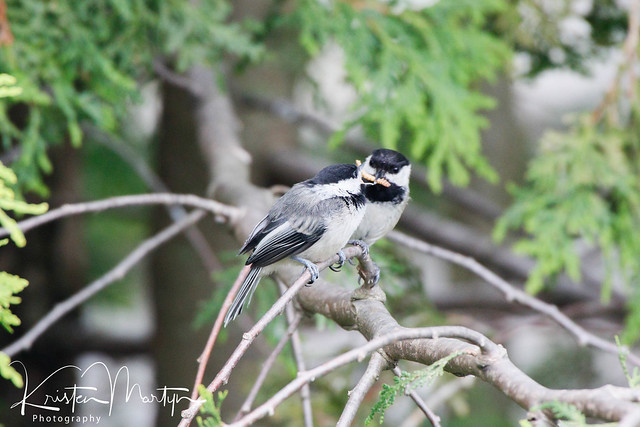 |
| Adult Black-capped Chickadee (back) feeding a fledgling (front) live mealworms |
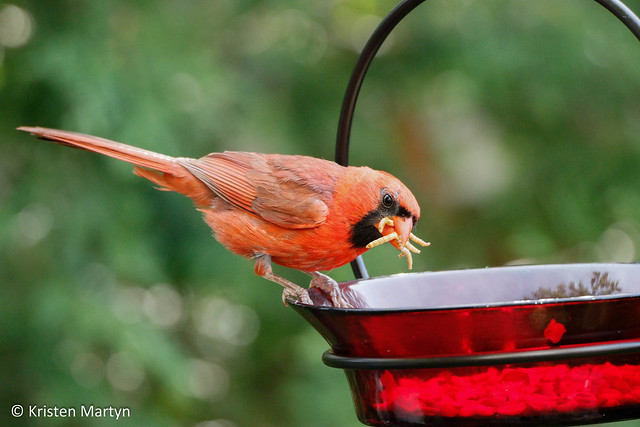 |
| Adult male Northern Cardinal collecting live mealworms for his growing family |
3. They are very curious! Fledglings are incredibly curious about everything. From their surroundings, to bird feeders- they are exploring the world and taking it all in. Some young birds seem to be very curious about humans. A young female Hairy Woodpecker fledgling kept landing near me and watching me fill the feeders recently. She was quite happy to feed with me just a short distance away. The young Hairy seemed to have little fear of humans, perhaps something her parents will teach her later on. Last year my chickadee parents scolded their 4 young fledglings with a harsh "dee-dee-dee-dee-dee-dee-dee" as they were curious about my presence and got too close to me for their parent's comfort. The more "dees" in a chickadee's song, the more nervous/scared they are. The fledgling cardinals that visited our backyard last summer with their parents also didn't seem too bothered by humans; but learned quickly from mom and dad to leave at the first sign of people. Cardinals are a very timid and shy bird by nature, so it's not a surprise they pass this trait along to the young ones early.
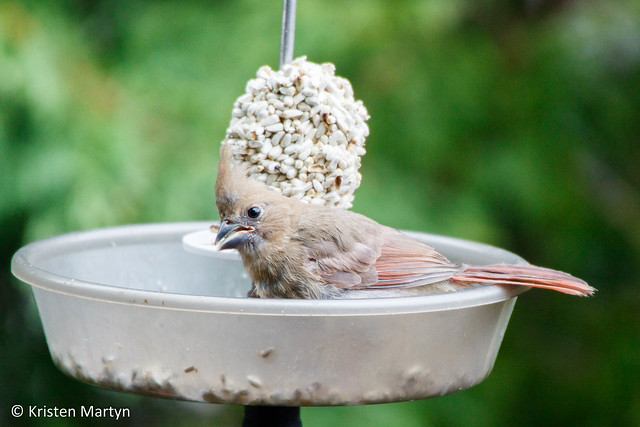 |
| Fledgling Northern Cardinal trying Safflower |
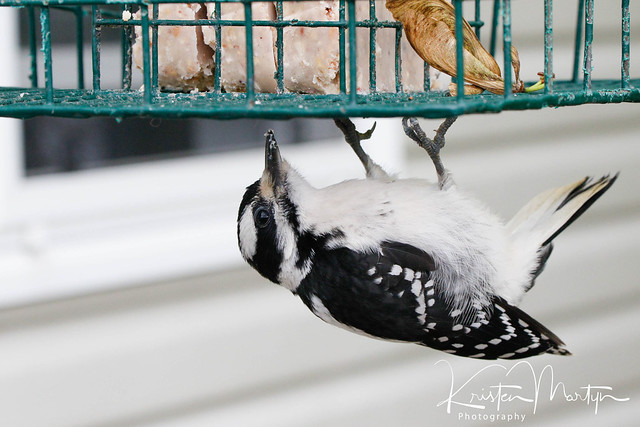 |
| Fledgling female Hairy Woodpecker feeding close to me with little fear |
4. They are still learning. Fledgling birds may appear to be clumsy at times as they learn about the world around them. This is particularly funny if you are observing young woodpeckers. Many have no idea how to use their large beaks and playful peck at any and everything they find just to see how it works. Woodpeckers also seem to need practice landing and climbing up a trees. Many young birds also need to learn where they stand in the "pecking" order. Many have not had to deal with a hierarchy yet or other more dominant birds. I've seen fledgling Hairy Woodpeckers scared off feeders by adult Downy Woodpeckers because, the Downy's are the more dominant bird...at least until the Hairy Woodpeckers learns they are the bigger bird.
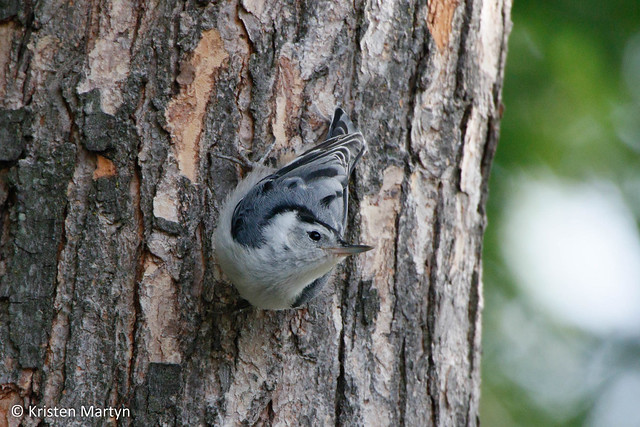 |
| Fledgling White-breasted Nuthatch learning how to maneuver upside down on a tree |
5. They learn much of what they need to know from their parents. Just like many mammal babies, birds learn many behviours from their parents. However, they are also born with many instincts as well, for example migration. It is interesting to watch young birds as parents demonstrate how to behave. In my backyard, I find it amusing to to watch parents teach their young ones how to feed at a bird feeder, which foods to eat and sometimes how to feed from them. For example, my adult chickadee pair are teaching their young ones how to get into a feeder with a cage around it. The cage prevents blackbirds and starlings from entering, but the chickadees and other small bird maneuver through the bars with ease.
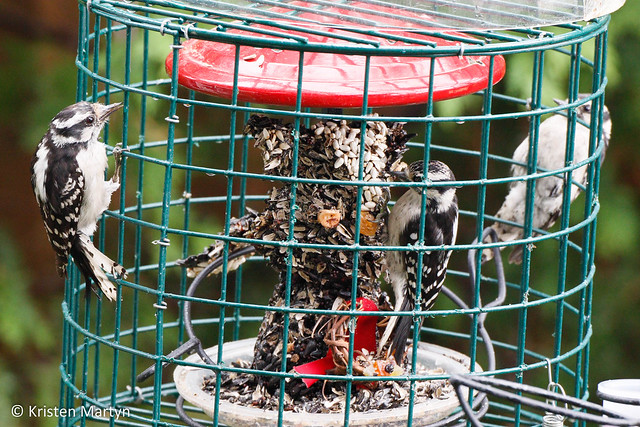 |
| Young Downy Woodpecker fledglings learning to use a feeder with a cage around it |
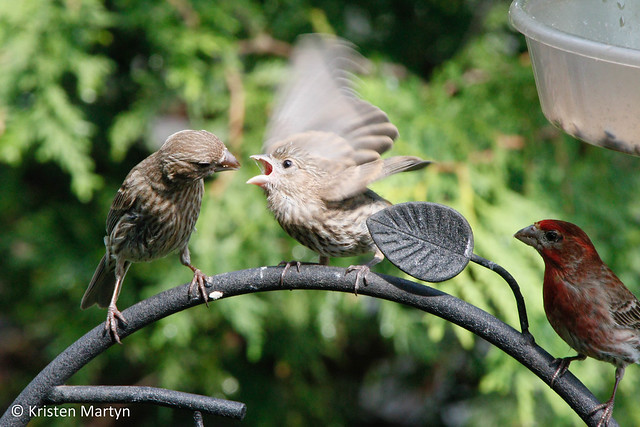 |
| Female House Finch (left) feeding a fledgling (middle) while the male (right) looks on |
Enjoy those fledglings everyone!
~Kristen





























One fledgling chickadee is not opening he beak to feed. The parents come back and he will not take food for over 30 minutes and counting. There were only 2 fledglings and in the fist few hours out of the nest a crow scooped one up. The second survived the night and morning but is not eating frequently. Yesterday he ate ever minute or so. How long can they not eat what is offered and survive. We worry about the crows which we are chasing away and neighbourhood cats that are so quiet.
ReplyDeleteKarem
Hi Karen,
DeleteIt's tough being a fledgling bird isn't it. So much out there to watch for. My recommendation would be if you don't see the parents feeding the chick for a few hours. Call your local wildlife rehabilitator that works with birds and seek their advice. They will be able to provide you with the best way to proceed. Rehabbing birds can be difficult and is best left to someone with the proper accreditation.
Kristen
I have a swallow nest built on an eave above my front door. It's a safe area, and this is the parents' 2nd brood. 3 out of 5 survived, but 2 days ago, 2 of the babies have flown, one is out of the nest on the ledge. The parents are returning, but how long will this baby be cared for if she/he doesn't fly. Is this normal?
ReplyDeleteThat does sound like a normal nesting experience for many birds. Often the nests get too small to accommodate all of the growing chicks. Slowly they leave the nest as they get too big and want to explore. The parents will continue to feed and care for the babies after they have fledged (left the nest) for as long as two weeks. :) Kristen
Delete